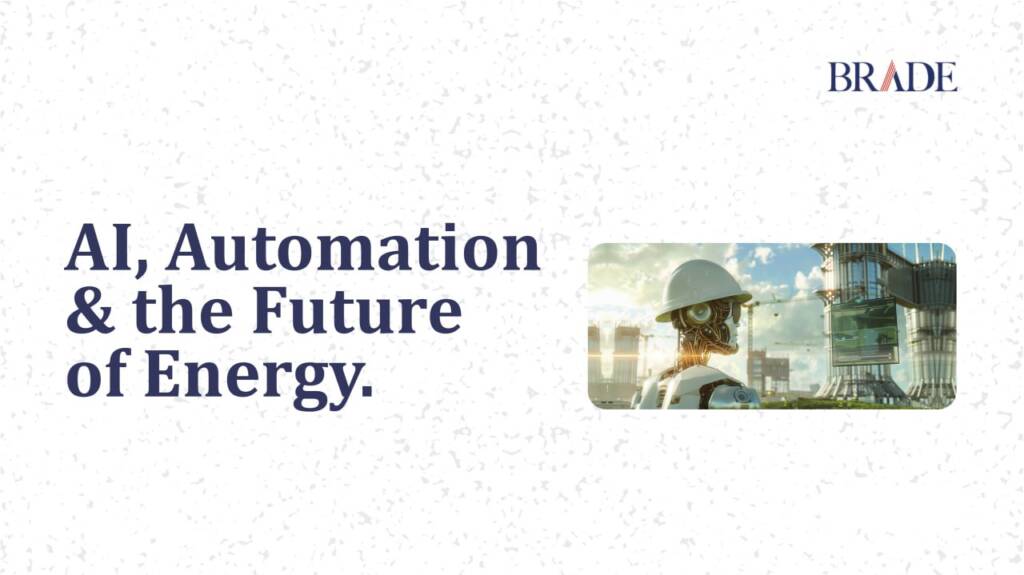
The energy sector is no stranger to evolution. From the first offshore drilling rigs to advanced deepwater exploration, innovation has always been at the heart of progress. But today, a new force that doesn’t rely on traditional manpower or physical infrastructure is driving change. Artificial intelligence and automation are redefining how oil and gas companies explore, extract, and refine energy, turning complex, high-risk operations into data-driven, precision-engineered processes.
What once depended on human instinct and experience is now being optimized by predictive algorithms, machine learning models, and automated systems that work faster, smarter, and without error.
This means that the industry is shifting from reaction to prevention, from guesswork to data-driven certainty. The transformation isn’t coming; it’s already here. The question is: How fast can companies adapt before they’re left behind?
From Downtime to Predictive Precision: AI in Maintenance
In the oil and gas industry, downtime is the enemy. A single unexpected equipment failure on an offshore rig can cost a company up to $38 million per year in lost production. In the past, operators relied on scheduled maintenance, hoping to catch potential failures before they happened. But traditional maintenance is a guessing game and machines don’t always break down on schedule.
AI-driven predictive maintenance is a game-changer in asset management and AI systems continuously analyze real-time sensor data from pumps, compressors, turbines, and pipelines, detecting subtle anomalies that indicate wear and tear long before human engineers can spot them. Instead of waiting for a catastrophic breakdown, AI forecasts exactly when and where repairs are needed, preventing unplanned shutdowns and significantly reducing maintenance costs.
Autonomous Drilling & Robotics: The Rise of Smart Rigs
Instead of the image of a drill floor lined with roughnecks manually controlling heavy machinery is fading, AI-powered, automated drilling rigs are making operations safer and more efficient. These rigs use real-time geological data, machine learning models, and robotic controls to optimize drilling parameters, adjusting weight-on-bit, torque, and penetration rates with a level of precision that human operators simply cannot match.
Major players like Equinor and Shell have implemented AI-driven predictive maintenance for its offshore platforms. For instance, Shell achieved a 20% reduction in downtime and cutting maintenance costs by $4 million per year. This shows their commitment to leveraging AI to enhance operational efficiency and safety.
In collaboration with Halliburton and Sekal, Equinor deployed the world’s first automated on-bottom drilling system on the Norwegian Continental Shelf, integrating advanced automation technologies to enhance drilling efficiency and safety. Additionally, Equinor’s AIM (Artificial Intelligence Maturation) project has transformed well planning by automating the generation of well paths, significantly reducing the time required for planning from several months to a more streamlined process.
Beyond drilling, autonomous drones and robotic crawlers are now inspecting offshore platforms, pipelines, and storage tanks, reducing the need for human workers in hazardous areas. These machines can detect corrosion, gas leaks, and structural weaknesses faster and more accurately than traditional methods, significantly improving safety while minimizing operational risk.

AI-Powered Energy Forecasting: Smarter Decision-Making
In an industry where oil prices can swing dramatically due to geopolitical events, market fluctuations, and supply chain disruptions, accurate forecasting is critical. Historically, energy companies relied on historical data and manual analysis to predict demand and price trends. However, these methods often failed to account for complex, real-time variables such as weather patterns, geopolitical risks, or shifts in consumer energy consumption.
AI is changing that.
Machine learning models can now process millions of data points in seconds, analyzing global supply chains, economic indicators, and environmental factors to forecast energy demand with unprecedented accuracy.
Take ExxonMobil’s AI-driven market forecasting models, which analyze global refinery output, trade flows, and demand trends to optimize production levels. These models have helped Exxon reduce surplus inventory and better align output with real-time demand, leading to more stable pricing and higher profit margins.
AI-driven forecasting doesn’t just help companies, it benefits consumers by reducing price volatility and improving energy availability worldwide.
AI’s Role in Reducing Carbon Footprints
As global pressure mounts for cleaner energy production, AI and automation are becoming critical tools in reducing emissions and optimizing resource usage. Smart automation in refineries is already improving energy efficiency, cutting waste, and ensuring compliance with environmental regulations.
Take carbon capture technology, for example. AI-powered systems now monitor CO₂ emissions in real time, automatically adjusting production processes to minimize carbon output while maintaining efficiency. Companies like Chevron are leveraging AI to optimize carbon capture techniques, ensuring that CO₂ is stored safely without compromising operational performance.
Beyond fossil fuels, AI is helping oil and gas companies integrate renewable energy into their operations. By analyzing solar and wind energy patterns, AI systems allow energy companies to blend traditional oil and gas production with renewables, reducing their overall carbon footprint while maintaining stable energy output.
What’s Next? The Future of AI in Energy
The shift toward AI and automation is only accelerating. In the coming years, we can expect to see even more groundbreaking advancements, including:
- Blockchain-powered smart contracts that make energy trading faster, more secure, and more transparent
- Digital twins; AI-powered virtual models of entire oil rigs and refineries that allow engineers to test changes and optimize operations before implementing them in real life
- Fully autonomous offshore platforms, reducing the need for human crews in high-risk areas
- AI-powered supply chain optimization, ensuring the efficient transport and delivery of energy resources
AI is no longer just a tool; it’s the foundation of the future energy landscape.
The energy sector has always thrived on innovation, but the companies that will lead the next decade are the ones that embrace AI and automation today. Those who fail to adapt will find themselves lagging behind competitors, losing operational efficiency, and struggling to remain profitable in an increasingly tech-driven world.
At BRADE Consulting, we don’t just talk about the future; we help our clients build it.
We’re working with operators, developers, and field teams to strategically implement AI and automation where it matters most; from predictive maintenance and digital planning to emission control and smart rig systems.
Because in today’s high-stakes, fast-moving energy landscape, being reactive is a liability, and execution with intelligence is the new standard.
The future of energy isn’t just digital, it’s intelligent. The question is no longer if AI will reshape the industry; it’s already happening. The only question left is:
Is your company ready to lead the charge?

